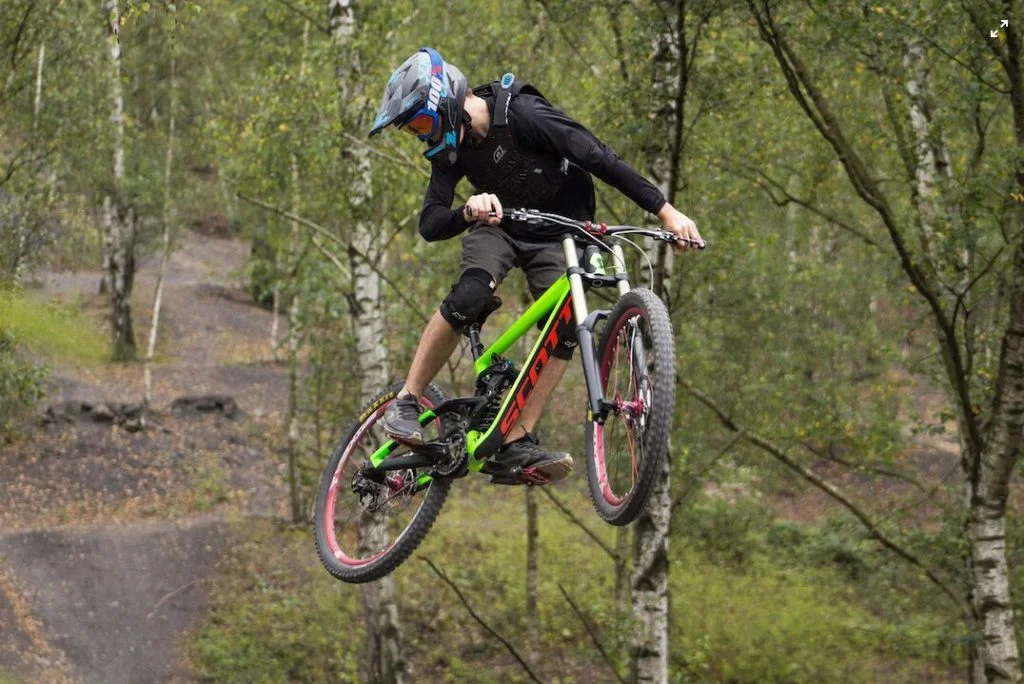Downhill mountain biking is an exhilarating sport that combines speed, skill, and adrenaline as riders navigate steep terrain and challenging obstacles. Whether you’re a beginner or an experienced rider, understanding the techniques and equipment involved is crucial for a safe and enjoyable experience. Here’s an in-depth look at what you need to know about downhill mountain biking.
1. Essential Techniques for Downhill Riding
Body Positioning
Maintaining the right body position is critical for stability and control:
- Low Center of Gravity: Keep your knees bent and your body low over the bike to lower your center of gravity.
- Weight Distribution: Shift your weight back during descents to prevent the front wheel from lifting and to maintain traction.
Braking Skills
Proper braking technique is essential for controlling speed:
- Use Both Brakes: Engage both the front and rear brakes simultaneously to achieve balanced stopping power. The front brake provides the most stopping force, but overusing it can lead to a loss of control.
- Feathering: Instead of squeezing the brakes hard, use a feathering technique to maintain speed while controlling your descent.
Cornering
Mastering cornering is vital for navigating turns effectively:
- Look Ahead: Always focus on where you want to go, not just the immediate path in front of you.
- Lean Your Bike: Shift your body weight and lean the bike into the turn to maintain grip and speed.
Riding Over Obstacles
Overcoming obstacles like rocks and roots requires skill:

- Choose Your Line: Look for the best path through obstacles and practice your timing for lifting the front wheel.
- Bunny Hop: Mastering the bunny hop technique can help you clear smaller obstacles without losing speed.
2. Key Equipment for Downhill Mountain Biking
Downhill Bike
Investing in a proper downhill bike is essential:
- Full Suspension: Look for a bike with a full-suspension system to absorb shocks and provide better control on rough terrain.
- Geometry: A bike with a slack head angle and long wheelbase will offer more stability at high speeds.
Protective Gear
Safety is paramount in downhill biking:
- Helmet: Always wear a certified full-face helmet for maximum protection.
- Padding: Invest in knee pads, elbow pads, and gloves to protect yourself from falls.
- Body Armor: Consider wearing a chest protector and back protector for added safety during aggressive descents.
Footwear
Choosing the right footwear enhances your performance:
- Shoes: Opt for flat-soled shoes with good grip or clipless pedals, depending on your riding style. Flat shoes provide better control, while clipless pedals allow for more efficient power transfer.
Other Accessories
Don’t forget these essential accessories:
- Gloves: A good pair of gloves can improve grip and comfort.
- Goggles: Protect your eyes from dust and debris with quality goggles designed for downhill riding.
- Water Bottle or Hydration Pack: Staying hydrated is crucial during long rides, so ensure you have easy access to water.
3. Preparing for a Downhill Ride
Trail Familiarization
Before hitting the trails, take time to familiarize yourself with the route:
- Study the Trail Map: Understand the terrain, obstacles, and potential hazards.
- Scout the Trail: If possible, walk the trail to identify challenging sections and plan your lines.
Bike Maintenance
Keep your bike in top condition:
- Regular Inspections: Check your brakes, tires, and suspension before each ride.
- Lubrication: Ensure your chain and pivot points are well-lubricated for smooth operation.
4. Conclusion
Downhill mountain biking offers an adrenaline-pumping experience that challenges both your skills and your courage. By mastering essential techniques and investing in the right equipment, you can enjoy thrilling descents while ensuring your safety. Whether you’re hitting local trails or tackling more challenging terrain, embracing downhill biking can lead to unforgettable adventures.




